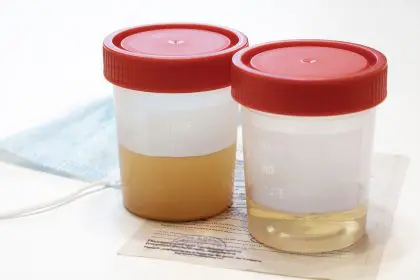Fibroids, noncancerous growths that develop in or on the uterus, are fueled by the hormones estrogen and progesterone. These hormones play a significant role in their development, growth and persistence. However, as women approach menopause, the body undergoes a major hormonal shift. Estrogen and progesterone levels begin to decline, disrupting the conditions that allowed fibroids to thrive.
Without the same levels of hormonal support, many fibroids start to shrink naturally. This process can vary from person to person, but in numerous cases, fibroids reduce in size significantly or even disappear altogether. The body, in a way, corrects itself by cutting off the resources that once sustained these growths.
The natural shrinkage of fibroids is a key reason why many doctors take a watch-and-wait approach before recommending surgery. If a woman is nearing menopause and her fibroids are not causing severe symptoms, medical professionals may advise monitoring the situation rather than opting for invasive treatment.
Not all fibroids shrink at the same rate
Although fibroids often shrink over time, the rate at which they do so varies based on multiple factors. The size and location of the fibroid can influence how quickly it shrinks. Smaller fibroids may regress faster, while larger ones could take longer to shrink. The body’s overall hormone levels and metabolic rate also play a role in how fibroids change over time.
In some cases, fibroids shrink unevenly, meaning one may decrease in size significantly while another remains relatively unchanged. The presence of multiple fibroids can make the process even more unpredictable. Some women experience noticeable changes within a few years of menopause, while others may continue to have fibroids, though with reduced symptoms.
Blood supply changes can trigger fibroid shrinkage
Fibroids require a steady blood supply to grow and maintain their size. The body directs nutrients and oxygen to these growths through a network of small blood vessels. However, as menopause approaches, changes in circulation and hormone levels disrupt this supply. Without enough blood flow, fibroids become deprived of the resources they need to sustain themselves.
As a result, the fibroids start to shrink and break down over time. The extent of this process depends on individual health factors, but reduced blood flow plays a major role in fibroid regression. This is why many postmenopausal women find that their fibroids gradually become smaller or less problematic without any medical intervention.
Lifestyle factors may influence fibroid changes
While hormonal shifts are the primary cause of fibroid shrinkage, certain lifestyle factors can influence how the body responds to these changes. Weight gain, stress, diet and overall metabolic health all contribute to hormone regulation, which in turn can impact fibroid growth.
Excess body fat, for instance, can produce estrogen even after the ovaries have stopped producing it. This lingering hormone supply may slow down the fibroid-shrinking process. On the other hand, maintaining a balanced diet and healthy weight can help the body transition more smoothly through menopause, potentially aiding in fibroid regression.
Stress is another factor that may indirectly affect fibroids. Chronic stress influences hormone production, which can sometimes prolong the presence of fibroids. Engaging in stress-reducing activities, such as exercise, meditation or yoga, may help support the body’s natural processes.
Fibroid symptoms often improve with time
One of the biggest concerns for women with fibroids is the range of symptoms they can cause, including heavy menstrual bleeding, pelvic pain, bloating and frequent urination. However, as fibroids shrink, these symptoms often improve or disappear entirely.
Many women report a significant reduction in menstrual bleeding as they transition into menopause. Since fibroids contribute to heavy periods, their natural decline leads to lighter, less frequent bleeding. Similarly, pressure-related symptoms such as bloating or urinary issues often resolve as fibroids decrease in size.
Even in cases where fibroids remain after menopause, they tend to be less problematic. The absence of estrogen and progesterone prevents them from growing, making them more manageable over time.
Surgical intervention isn’t always necessary
A common misconception is that fibroids always require surgical removal. While some women do need medical treatment—especially if fibroids cause severe pain, bleeding or fertility issues—many cases resolve naturally.
For women approaching menopause, doctors often recommend a wait-and-see approach. Since fibroids are likely to shrink on their own, undergoing surgery or other treatments may not be necessary. In cases where symptoms are mild and do not significantly impact daily life, simply monitoring fibroid changes over time can be a reasonable approach.
However, in cases where fibroids cause persistent pain or complications, medical treatments such as hormone therapy, non-invasive procedures or surgical removal may be considered. The key is understanding that fibroids are not always a permanent condition and may resolve on their own as the body undergoes natural changes.
Final thoughts
Fibroids are a common health concern, but they are not always a lifelong problem. As hormone levels drop with age, many fibroids shrink naturally, reducing or eliminating symptoms. Blood supply changes, metabolic factors and lifestyle habits all influence this process, making each woman’s experience unique.
While some women require medical intervention, many find that their fibroids become less of a concern over time. Understanding how fibroids behave and the natural changes that occur in the body can help women make informed decisions about their health without unnecessary treatments.
















